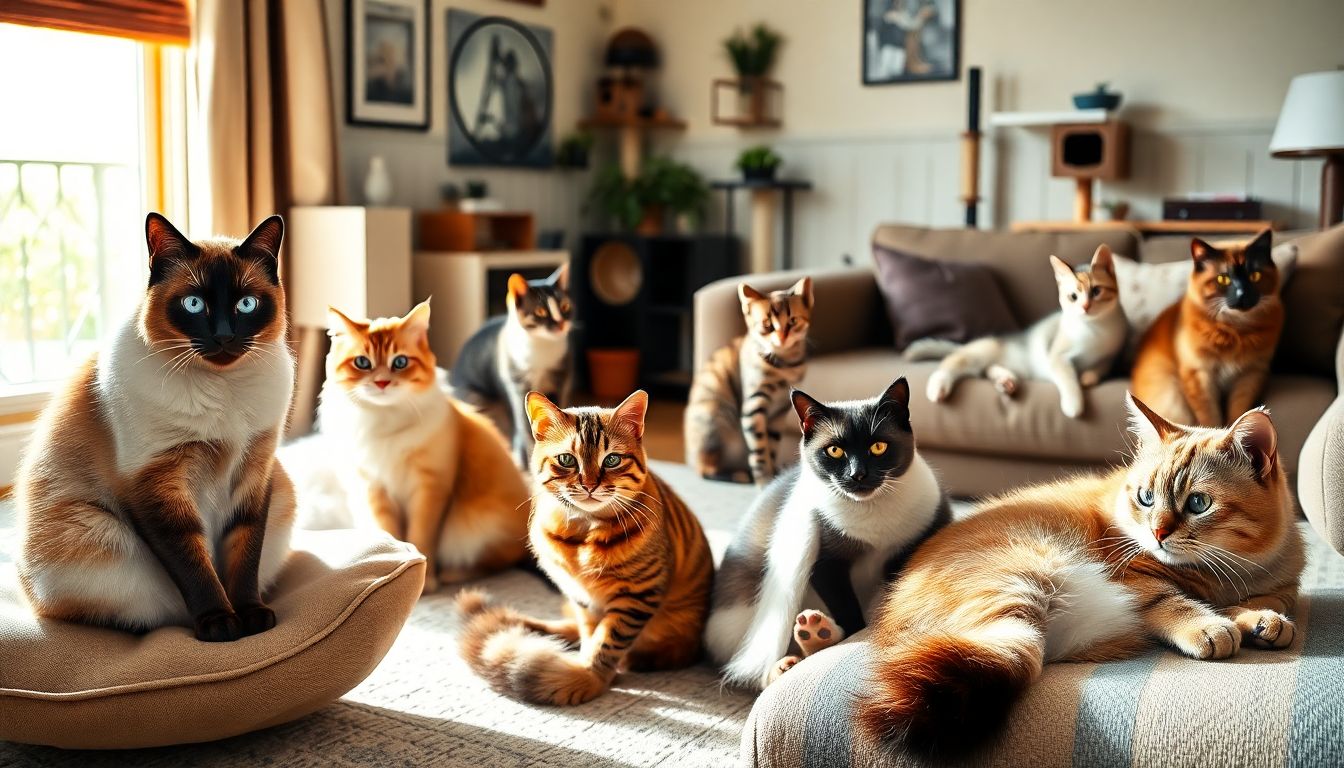
Cats are among the most popular pets worldwide, loved for their independence and charm. Choosing the right breed can make a big difference in how happy and healthy your feline friend becomes. Different breeds come with different traits, so understanding their care needs helps keep your cat thriving. When you know what each breed needs, you’ll build stronger bonds and enjoy a happier pet.
Recognizing the Importance of Breed-Specific Care Needs
Each cat breed carries its genetic makeup, which influences behavior, health, and grooming. Some might be more active or affectionate, while others may have specific health risks. Tailoring care based on breed helps prevent problems and boosts your pet’s happiness. It’s like giving your cat a custom-made plan that matches their unique personality and needs.
Popular and Unique Cat Breeds Overview
Domestic Shorthair
Most homes have a mixed breed called a Domestic Shorthair. They’re known for being adaptable and easy to care for, making them perfect for first-time owners.
Siamese
Siamese cats are highly social, talkative, and very intelligent. They love companionship and need lots of mental stimulation to stay happy.
Maine Coon
Large and friendly, Maine Coons are gentle giants. Their semi-long fur needs regular grooming, and they love open spaces to stretch their legs.
Persian
Persians have a flat face and long, silky coat. Their grooming is a daily routine, and they’re prone to some health issues like breathing problems.
Bengal
Bengal cats look wild with spots and stripes. They’re super active and energetic, needing plenty of playtime and toys for enrichment.
Ragdoll
Ragdolls are fluffy, affectionate, and love cuddling. They’re big, calm cats that benefit from regular grooming and lots of human interaction.
Sphynx
Hairless and friendly, Sphynx cats are energetic and crave warmth and attention. Their skin needs cleaning to prevent oil buildup.
Scottish Fold
Recognized by their unique folded ears, Scottish Folds are gentle and easygoing. They are prone to joint problems, so checkups are vital.
Abyssinian
Highly active and intelligent, Abyssinians thrive on constant stimulation. They love climbing and interactive play.
British Shorthair
Calm and easygoing, British Shorthairs have dense coats that don’t require much grooming. They’re perfect for relaxed households.
Behavioral Traits and Enrichment Strategies
Active Breeds and Their Exercise Needs
Bengals and Abyssinians are full of energy. Regular play sessions with toys and challenges keep them happy and healthy.
Social and Affectionate Breeds
Ragdolls and Siamese love being around people. They need companionship and enjoy cuddles and conversations.
Independent and Low-Maintenance Breeds
British Shorthairs and Domestic Shorthairs are more laid-back. They handle being alone well and require less stimulation.
Dietary and Nutritional Considerations
Breed-Specific Dietary Needs
Long-haired breeds like Persians may struggle with obesity, so watch their diet. Short-haired cats usually need less frequent grooming but still benefit from a balanced diet.
Special Nutrition for Health Conditions
Persians and brachycephalic breeds may need special care for breathing issues. Bengals, with their high energy, need high-protein foods for fuel.
Tips for Feeding and Weight Management
Use measured portions and set regular feeding times. Limit treats and switch to healthy snacks to keep your cat in good shape.
Grooming and Health Care
Grooming Needs per Breed
Long-haired cats like Persians and Maine Coons need daily brushing to prevent mats. Short-haired breeds are easier but still benefit from regular upkeep.
Disease Predispositions and Prevention
Persians are prone to kidney issues, while Scottish Folds often have joint problems. Regular vet visits help catch problems early.
Regular Vet Checkups and Preventative Care
Vaccinations, dental care, and parasite control are essentials no matter the breed. Routine health checks keep your cat in top shape.
Living Environment and Space Requirements
Space Needs Based on Breed Activity Level
Active breeds like Bengals need plenty of room and climbing spaces. Calm breeds suit apartment living and smaller areas.
Environmental Enrichment
Install climbing trees, scratching posts, and toys matching your cat’s personality. These keep your feline entertained and prevent boredom.
Safety Tips for Indoor and Outdoor Living
Secure windows, avoid outdoor hazards, and consider outdoor enclosures for adventurous cats. Safety routines reduce risks and keep them healthy.
Choosing the Right Breed for Your Lifestyle
Matching Breed Temperament to Owner Lifestyle
Active individuals should pick energetic breeds like Bengals. Busy owners might prefer low-maintenance cats like British Shorthairs.
Long-Term Commitment and Care
Cats live an average of 12-16 years, so consider grooming, health needs, and activity levels before choosing a breed.
Resources for Further Information
Look for breed clubs, trusted breeders, and veterinary advice to guide your decision. Learning more helps ensure a happy life together.
Conclusion
From playful and energetic to calm and cuddly, the world of cat breeds is full of variety. Understanding each breed’s distinct care needs helps create a happy, healthy pet. Tailored care not only keeps your cat feeling good but also deepens the bond you share. Before adopting, do your homework, ask experts, and pick the breed that fits your lifestyle perfectly. A well-matched cat means lifelong joy and companionship.
